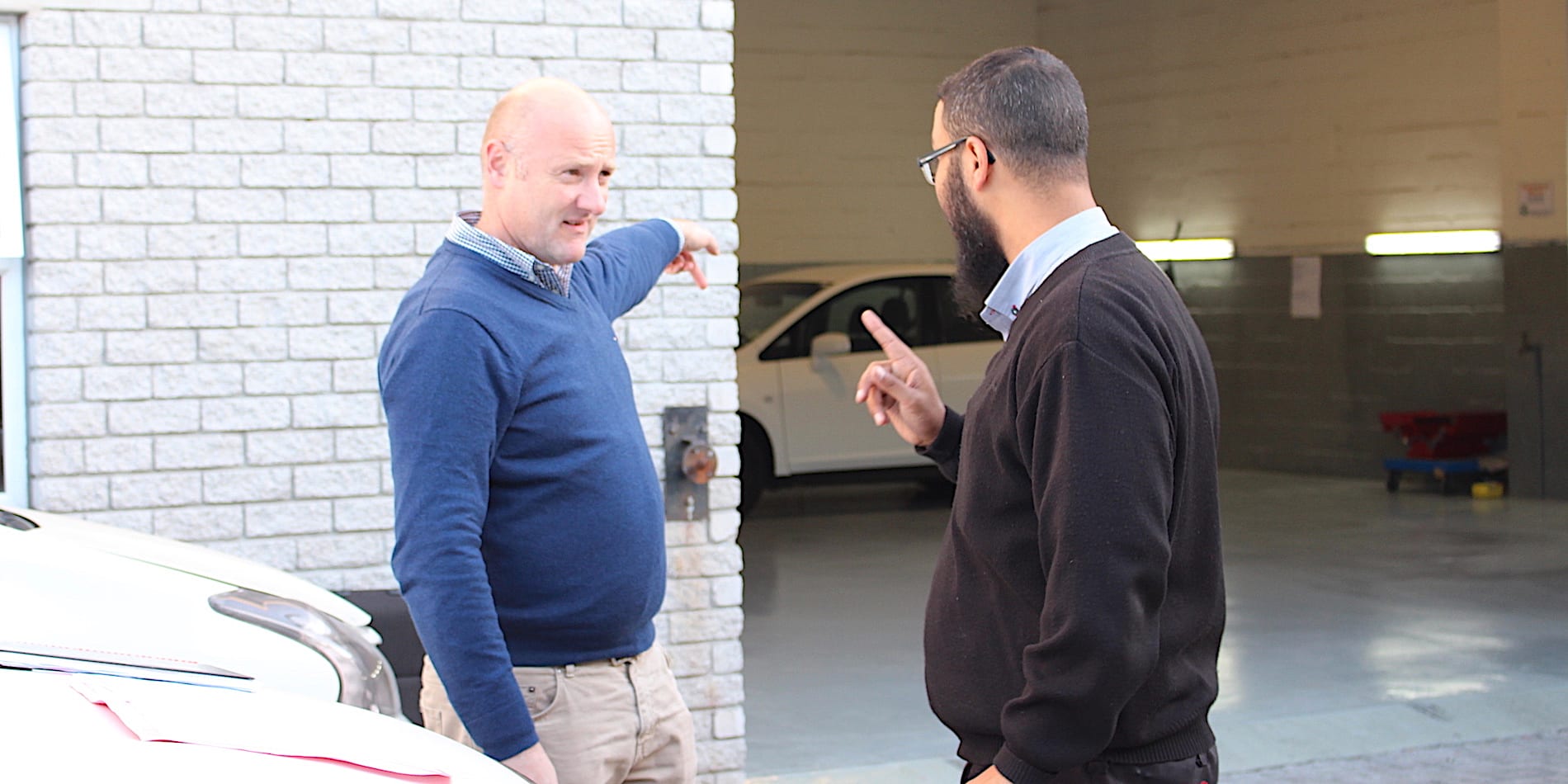
Pick the right approach to lean thinking to beat resistance
FEATURE - We are often told that employee resistance to change is natural, but it’s really just the result of a wrong approach to lean thinking. Learn to effectively engage people and change will follow.
Words: José Roberto Ferro, President, Lean Institute Brasil
“Everything flows……Nothing is more permanent than change”
- Heraclitus -
A lean transformation is one of the most significant changes an organization can face throughout its existence, having a profound impact on daily practices, on how the work is done, and on the fundamental values and assumptions connecting people with each other and with their jobs.
You have probably heard many times that organizations on a lean journey have to work towards managing change in order to overcome resistance and the obstacles that will inevitably arise in the process.
The basic assumption underlying this idea might be that human beings tend to be conservative and that therefore; resistance to change is an element of human nature.
Because resistance to change can be pervasive and incredibly subtle, not to mention difficult to see and grasp, it’s important for a company to devise a specific strategy to fight and overcome it. However, this normally could take the form of a heroic battle between a group of “change believers” and another of “change blockers”. And hopefully, for the sake of change, the former will prevail!
We often hear that change is not natural and that we have to fight hard in order to make it happen.
However, I believe change is natural and resistance to change is not. So here’s some ideas towards a lean way to manage change, where people are truly engaged and resistance is minimized.
We need a strategy to manage change effectively that is different than the prevailing ones. If we properly define the purpose of the change, identify the risks and obstacles, understand where we are, why there is a need for change and where we want to go, and come up with a plan aligning all those involved in the change, shouldn´t resistance become less of a problem?
THE CHANGE ISSUE IN MANAGING ORGANIZATIONS
What is wrong with traditional thinking around change management? Here’s a well-known metaphor.
It was popularized in many countries by Spencer Johnson’s best selling book Who Moved My Cheese? and illustrates some of the implicit assumptions about the inevitability of change and change resistance.
The tale describes two rats and two little people living in a maze and constantly looking for cheese. The two groups have a very different approach to finding and saving food: the mice are proactive and flexible, being ready to resume their quest for cheese when supply dwindles, while the little people are lazy and static, and grow increasingly frustrated and aggressive as things get tough.
This book seems to encourage us to embrace change, but in reality it mainly focuses on the inevitability of moving: it mostly teaches us that when there is nothing else to do, one should move, as animals do. But extending this concept to human beings, organizations, and society might be seen as a big and dangerous leap.
Scientific management literature has dedicated much effort to explaining change and change management, often discussing the need to create a specific process to overcome the expected resistance by explicitly defining actions that will contribute to making change successful.
Management scholars often tell us to focus on eliminating obstacles in the change process. Usually, their recommendations include:
- improving communication of the vision and goals;
- eliminating complacency and the natural change avoidance;
- tackling the lack of powerful change coalitions;
- tackling the disconnect between the proposed changes and corporate culture;
- and so on...
These concepts, however, fail to deeply identify the real obstacles and challenges in a change process.
For instance, communicating often means telling people what to do (top-down), and not necessarily engaging them in the design and definition of the process. Complacency implies that people tend to be lazy and don’t like or don’t want change. Creation of coalitions implicitly assumes that there could be power groups within the company trying to push their own agenda as opposed to the organization’s needs And finally, all change processes are, in fact, a result of the current organizational culture.
There is a prevailing assumption that if we don´t have strong leaders with the proper behavior creating pro-change groups to overcome and impose over the anti-change resistance, we will not have positive change.
What is the problem with this approach? Why doesn’t this framework lead to successful change programs, as we often witness, and why are there so few company cultures in which change and improvement are naturally embedded and pervasive?
Could it be that people don’t see the value that change would bring?
Let´s take a look at a very substantial change that occurred in people’s lives over the last decade with the proliferation of mobile phones. Here in Brazil, the current ratio is about one mobile phone per capita. Despite the very high number of poorly educated people, even illiterate in certain cases, and the fact that to use a phone requires a learning effort, we see many people who are eager to fork out large amounts of money and who fight hard to acquire the newly needed skills.
When change is seen as good and helpful, people will make the necessary effort and work hard for it. We hardly see any resistance in those occasions. You may see people struggling with a steep learning curve when something new is asked of them, but so long as there is interest they’ll be willing to try.
We need to understand what is wrong with the way we approach change and why we seem incapable of communicating properly with our people, emotionally engaging them in the hands-on activities required to make change happen.
THE LEAN APPROACH
In order to create the conditions for a successful lean transformation, many companies establish change management programs intended to overcome resistance. But the lean effort is in itself a major change program that, if properly managed, should make resistance less prominent. Lean transformations and change programs should not be separated as they often are.
Our experience shows that most of the changes that stem from a lean implementation tend to bring substantial positive results for the company, including financial gains. Still, we often see leaders being skeptical or even deliberately boycotting lean. Why so many obstacles, so much resistance in situations intended to change things for the better?
Managing change to overcome resistance is mainly a rework activity, meaning that something might be fundamentally wrong with your transformation process.
Our efforts should focus more on how we design and implement changes such as those required in a lean transformation process in order to eliminate resistance to change. Any activity meant to do this should be embedded in the change process and thought out in a very different way.
When change is connected and coincides with the priorities and goals of individuals and organizations, as it should be, it is very likely to have a high degree of support.
But often people have to understand, agree and reach a consensus and they should know how what they actually do in their jobs is connected to the organizational goals and the changes objectives.
Resistance to change should thus be an exception and not the norm.
Are those resisting change bad people because they can´t see the positive impact of change? Is it because management is so comfortable and used to the old way of doing things and to the current situation that they don´t bother or don´t want to learn new practices and do the work required for the changes to happen? Or is it because they think of themselves more than they do of the future of the organization?
This could all be true, but we must go past excuses and seek the root causes, focusing on the change process itself. People may resist because they were not properly engaged, they may have questions and doubts that the change design process didn´t allow them to voice, or, if they voiced them, they may have not done so loudly enough. More likely, they were not heard.
One may argue that there are “natural blockers”, people who systematically resist change. If that is the case, then the issue might be to understand what is wrong with a company’s people development process that is creating this kind of people.
Do permanent change blockers have this in their DNA? Imagine they do – then there must be something wrong with our hiring process, surely. Are we recruiting the people we want? Would we like to have them engaged in change or are we bringing people in who are adapting to the current situation and are not interested in challenging it?
There may also be other organizational priorities that require a different focus and different drivers that antagonize existing policies and goals.
And there certainly are many situations where people seem to be unhappy with the proposed changes. Maybe the reason is that we have not engaged them in the change process to allow the understanding of what is being tried to change and why.
A major challenge for all of us is now to make change (for the better, that is improvement) a natural part of organizational life.
I have seen many organizations concentrating more efforts and energy towards managing change to eliminate the obstacles in a lean transformation than towards implementing the changes themselves in order to facilitate that transformation.
THE AUTHOR

José Roberto Ferro is President of the Lean Institut Brasil, the Brazilian affiliate of the Lean Global Network. José has also held positions as professor at a number of Brazilian universities and as visiting scholar at MIT. Over the course of his career, he has worked with dozens of organizations in Brazil and beyond, helping them with their lean transformations.
Read more


FEATURE – By changing its attitude towards problems and welcoming them as opportunities to learn, this Colombian construction company has turned around its culture.


CASE STUDY – Faced with safety and quality issues, this Brazilian manufacturing plant installed a dojo, and the results are very promising.


FEATURE – Lean has now been around for quite some time, and its impact on business world is hard to dispute. But what does it tell us about traditional management practices?


FEATURE – The role of the coach in a lean transformation is an often-debated topic. The author discusses his experience building the architecture of the Halfway turnaround.

